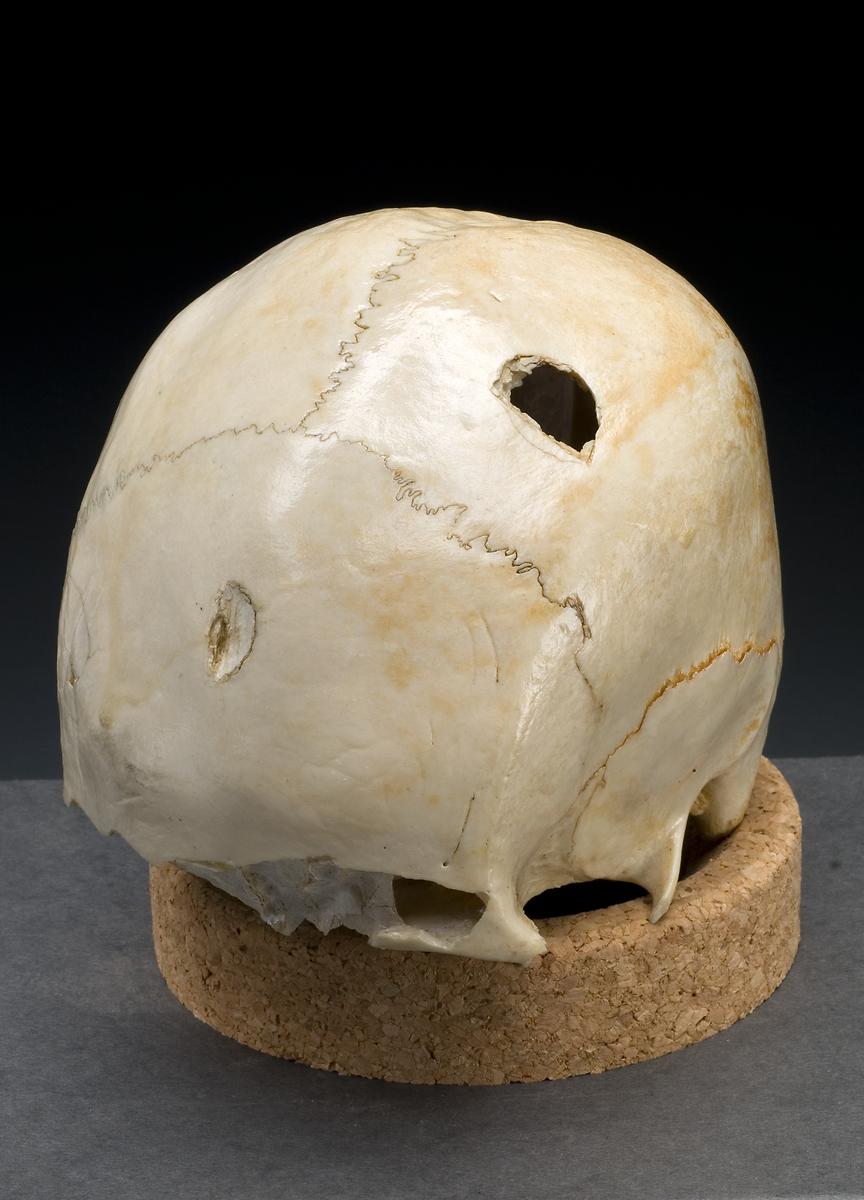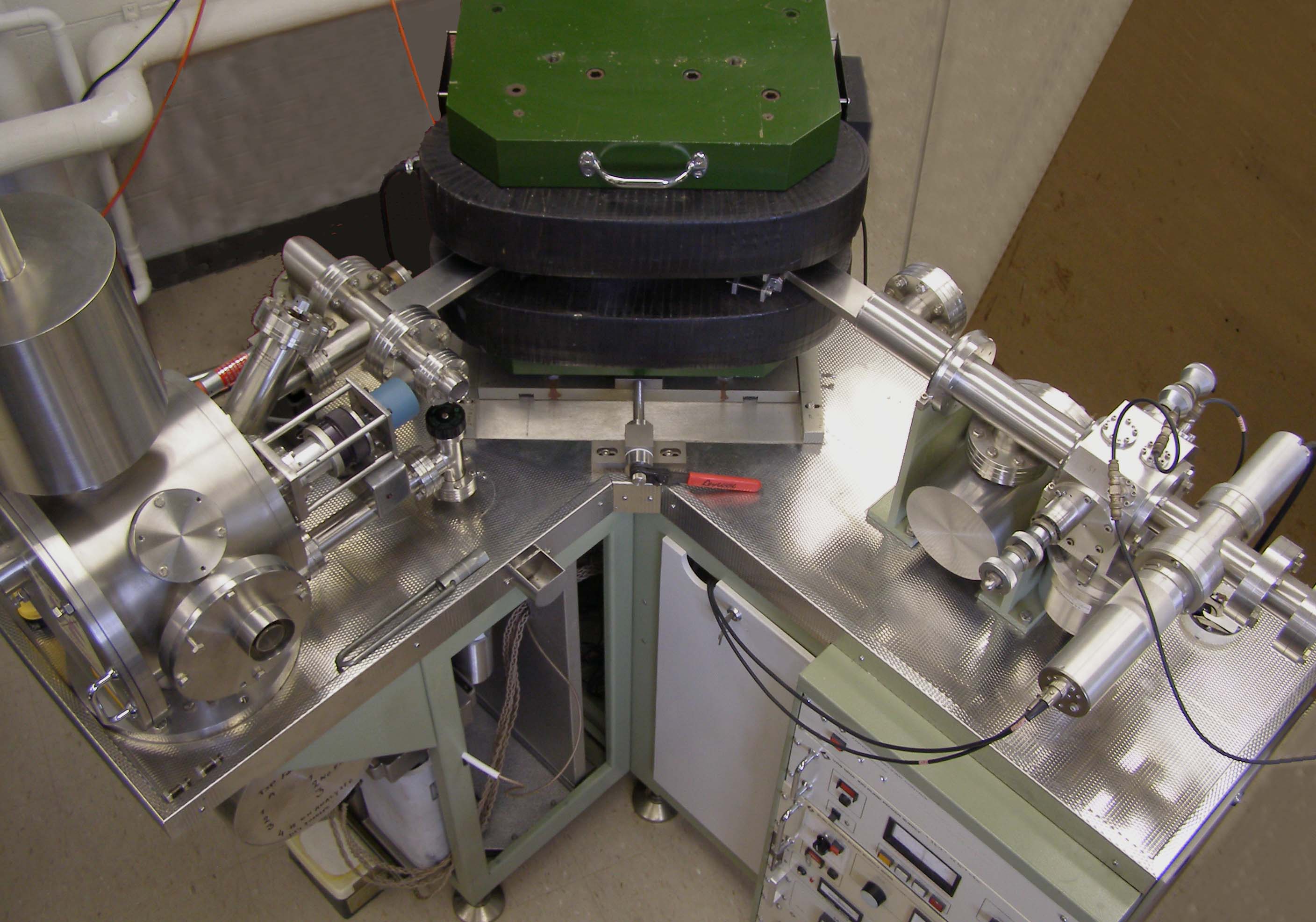|
Funerary Archaeology
Funerary archaeology (or burial archaeology) is a branch of archaeology that studies the treatment and commemoration of the dead. It includes the study of human remains, their burial contexts, and from single grave goods through to monumental landscapes. Funerary archaeology might be considered a sub-set of the study of religion and belief. A wide range of expert areas contribute to funerary archaeology, including epigraphy, material culture studies, thanatology, human osteology, zooarchaeology and stable isotope analysis. Laws Funerary archaeology within the United States is also connected with the legal system after the implication of the Native American Graves Protection and Repatriation Act (NAGPRA) established in 1990. The act set requirements that any facility, museum, or repository receiving federal funds must declare and return any human remains or funerary artifacts to a federally recognized tribe if cultural affiliation can be declared between the tribe and the artifact ... [...More Info...] [...Related Items...] OR: [Wikipedia] [Google] [Baidu] |
Archaeology
Archaeology or archeology is the study of human activity through the recovery and analysis of material culture. The archaeological record consists of Artifact (archaeology), artifacts, architecture, biofact (archaeology), biofacts or ecofacts, archaeological site, sites, and cultural landscapes. Archaeology can be considered both a social science and a branch of the humanities. It is usually considered an independent academic discipline, but may also be classified as part of anthropology (in North America – the four-field approach), history or geography. The discipline involves Survey (archaeology), surveying, Archaeological excavation, excavation, and eventually Post excavation, analysis of data collected, to learn more about the past. In broad scope, archaeology relies on cross-disciplinary research. Archaeologists study human prehistory and history, from the development of the first stone tools at Lomekwi in East Africa 3.3 million years ago up until recent decades. A ... [...More Info...] [...Related Items...] OR: [Wikipedia] [Google] [Baidu] |
Mortuary Archaeology
Mortuary archaeology is the study of human remains in their archaeological context. This is a known sub-field of bioarchaeology, which is a field that focuses on gathering important information based on the skeleton of an individual. Bioarchaeology stems from the practice of human osteology which is the anatomical study of skeletal remains. Mortuary archaeology, as well as the overarching field it resides in, aims to generate an understanding of disease, migration, health, nutrition, gender, status, and kinship among past populations. Ultimately, these topics help to produce a picture of the daily lives of past individuals. Mortuary archaeologists draw upon the humanities, as well as social and hard sciences to have a full understanding of the individual. Mortuary archaeologists also use living groups to their advantage when studying populations that are no longer living. Moreover, mortuary archaeologists are involved in conflict archaeology, and study mass burials from different h ... [...More Info...] [...Related Items...] OR: [Wikipedia] [Google] [Baidu] |
Glossary Of Archaeology
This page is a glossary of archaeology, the study of the human past from material remains. A B C D E F G H I J K L M N O P Q R S T U V W X Y Z See also * Outline of archaeology * Table of years in archaeology * Glossary of history References Bibliography * * * * * * * * * External links About.com Archaeology Glossary {{Glossaries of science and engineering Archaeology Archaeology or archeology is the study of human activity through the recovery and analysis of material culture. The ... [...More Info...] [...Related Items...] OR: [Wikipedia] [Google] [Baidu] |
Grave Goods
Grave goods, in archaeology and anthropology, are items buried along with a body. They are usually personal possessions, supplies to smooth the deceased's journey into an afterlife, or offerings to gods. Grave goods may be classed by researchers as a type of votive deposit. Most grave goods recovered by archaeologists consist of inorganic objects such as pottery and stone and metal tools, but organic objects that have since decayed were also placed in ancient tombs. If grave goods were to be useful to the deceased in the afterlife, then favorite foods or everyday objects were supplied. Oftentimes, social status played a role in what was left and how often it was left. Funerary art is a broad term but generally means artworks made specifically to decorate a burial place, such as miniature models of possessions - including slaves or servants - for "use" in an afterlife. (Ancient Egypt sometimes saw the burial of real servants with the deceased. Similar cases of human sacrifice of ... [...More Info...] [...Related Items...] OR: [Wikipedia] [Google] [Baidu] |
Landscape Archaeology
Landscape archaeology, previously known as total archaeology is a sub-discipline of archaeology and archaeological theory. It studies the ways in which people in the past constructed and used the environment around them. It is also known as archaeogeography (from the Greek "ancient", and "earth study"). Landscape archaeology is inherently multidisciplinary in its approach to the study of culture, and is used by pre-historical, classic, and historic archaeologists. The key feature that distinguishes landscape archaeology from other archaeological approaches to sites is that there is an explicit emphasis on the sites' relationships between material culture, human alteration of land/cultural modifications to landscape, and the natural environment. The study of landscape archaeology (also sometimes referred to as the archaeology of the cultural landscape) has evolved to include how landscapes were used to create and reinforce social inequality and to announce one's social status to th ... [...More Info...] [...Related Items...] OR: [Wikipedia] [Google] [Baidu] |
Epigraphy
Epigraphy () is the study of inscriptions, or epigraphs, as writing; it is the science of identifying graphemes, clarifying their meanings, classifying their uses according to dates and cultural contexts, and drawing conclusions about the writing and the writers. Specifically excluded from epigraphy are the historical significance of an epigraph as a document and the artistic value of a literature, literary composition. A person using the methods of epigraphy is called an ''epigrapher'' or ''epigraphist''. For example, the Behistun inscription is an official document of the Achaemenid Empire engraved on native rock at a location in Iran. Epigraphists are responsible for reconstructing, translating, and dating the trilingual inscription and finding any relevant circumstances. It is the work of historians, however, to determine and interpret the events recorded by the inscription as document. Often, epigraphy and history are competences practised by the same person. Epigraphy is ... [...More Info...] [...Related Items...] OR: [Wikipedia] [Google] [Baidu] |
Material Culture Studies
Material culture is culture manifested by the physical objects and architecture of a society. The term is primarily used in archaeology and anthropology, but is also of interest to sociology, geography and history. The field considers artifacts in relation to their specific cultural and historic contexts, communities and belief systems. It includes the usage, consumption, creation and trade of objects as well as the behaviors, norms and rituals that the objects create or take part in. Material culture is contrasted with symbolic culture or non-material culture, which include non-material symbols, beliefs and social constructs. However, some scholars include in material culture other intangible phenomena like sound, smell and events, while some even consider it to include language and media. Material culture can be described as any object that humans use to survive, define social relationships, represent facets of identity, or benefit peoples' state of mind, social, or economic ... [...More Info...] [...Related Items...] OR: [Wikipedia] [Google] [Baidu] |
Thanatology
Thanatology is the scientific study of death and the losses brought about as a result. It investigates the mechanisms and forensic aspects of death, such as bodily changes that accompany death and the postmortem period, as well as wider psychological and social aspects related to death. It is primarily an interdisciplinary study offered as a course of study at numerous colleges and universities. The word is derived from the Greek language. In Greek mythology, Thanatos (: "death") is the personification of death. The English suffix '' -ology'' derives from the Greek suffix ''-logia'' (: "speaking"). History Russian scientist Élie Metchnikoff pioneered the field of thanatology and was famous for his work in microbiology and the discovery of phagocytosis "Phagocytosis is the process by which a celloften a phagocyte or protistengulfs a solid particle to form an internal compartment known as a phagosome." In 1903, he established a scientific discipline devoted to the study of ... [...More Info...] [...Related Items...] OR: [Wikipedia] [Google] [Baidu] |
Human Osteology
Osteology () is the scientific study of bones, practiced by osteologists . A subdiscipline of anatomy, anthropology, archaeology and paleontology, osteology is the detailed study of the structure of bones, skeletal elements, teeth, microbone morphology, function, disease, pathology, the process of ossification from cartilaginous molds, and the resistance and hardness of bones (biophysics). Osteologists frequently work in the public and private sector as consultants for museums, scientists for research laboratories, scientists for medical investigations and/or for companies producing osteological reproductions in an academic context. The role of an osteologist entails understanding the macroscopic and microscopic anatomies of bones for both humans and non-humans (courses in non-human osteology is known as zooarchaeology). Osteology and osteologists should not be confused with the pseudoscientific practice of osteopathy and its practitioners, osteopaths. Methods A typical ana ... [...More Info...] [...Related Items...] OR: [Wikipedia] [Google] [Baidu] |
Zooarchaeology
Zooarchaeology or archaeozoology merges the disciplines of zoology and archaeology, focusing on the analysis of animal remains within archaeological sites. This field, managed by specialists known as zooarchaeologists or faunal analysts, examines remnants such as bones, shells, hair, chitin, scales, hides, and proteins, such as DNA, to derive insights into historical human-animal interactions and environmental conditions. While bones and shells tend to be relatively more preserved in archaeological contexts, the survival of faunal remains is generally infrequent. The degradation or fragmentation of faunal remains presents challenges in the accurate analysis and interpretation of data. Characterized by its interdisciplinary nature, zooarchaeology bridges the studies of ancient human societies and the animal kingdom. Practitioners, from various scientific backgrounds including anthropology, paleontology, and ecology, aim primarily to identify and understand human interactions with a ... [...More Info...] [...Related Items...] OR: [Wikipedia] [Google] [Baidu] |
Stable Isotope Analysis
Isotope analysis is the identification of isotopic signature, abundance of certain stable isotopes of chemical elements within organic and inorganic compounds. Isotopic analysis can be used to understand the flow of energy through a food web, to reconstruct past environmental and climatic conditions, to investigate human and animal diets, for food authentification, and a variety of other physical, geological, palaeontological and chemical processes. Stable isotope ratios are measured using mass spectrometry, which separates the different isotopes of an element on the basis of their mass-to-charge ratio. Tissues affected Isotopic oxygen is incorporated into the body primarily through ingestion at which point it is used in the formation of, for archaeological purposes, bones and teeth. The oxygen is incorporated into the hydroxylcarbonic apatite of bone and tooth enamel. Bone is continually remodelled throughout the lifetime of an individual. Although the rate of turnove ... [...More Info...] [...Related Items...] OR: [Wikipedia] [Google] [Baidu] |
Native American Graves Protection And Repatriation Act
The Native American Graves Protection and Repatriation Act (NAGPRA), Pub. L. 101-601, 25 U.S.C. 3001 et seq., 104 Stat. 3048, is a United States federal law enacted on November 16, 1990. The Act includes three major sets of provisions. The "repatriation" provisions of the Act require federal agencies and institutions that receive federal funding to return Native American "cultural items" in their possession or control to lineal descendants and culturally affiliated American Indian tribes, Alaska Native villages, and Native Hawaiian organizations. Cultural items include human remains, funerary objects, sacred objects, and objects of cultural patrimony. A program of federal grants assists in the repatriation process and the Secretary of the Interior may assess civil penalties on museums that fail to comply. NAGPRA's "disposition" provisions establish procedures for the inadvertent discovery or planned excavation of Native American cultural items on federal or tribal lands, whi ... [...More Info...] [...Related Items...] OR: [Wikipedia] [Google] [Baidu] |









